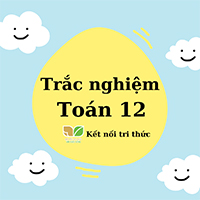Ngữ pháp Unit 3 lớp 12 Ways of Socialising
Nằm trong bộ đề Ngữ pháp tiếng Anh lớp 12 theo từng Unit, tài liệu Ngữ pháp tiếng Anh 12 Unit 3 Ways of socialising có trên VnDoc.com giúp các em học sinh lớp 12 tìm hiểu về quy tắc chung nhấn trọng âm của từ có hai âm tiết, quy tắc nhấn trọng âm dành cho từ có hai cách phát âm khác nhau, 3 nguyên tắc cần nhớ khi chuyển từ câu trực tiếp sang gián tiếp, cách chuyển câu trực tiếp sang câu gián tiếp.
Ngữ pháp tiếng Anh Unit 3 lớp 12 Ways of socialising
A. Cách đánh dấu trọng âm với từ có 2 âm tiết
1. Quy tắc chung nhấn trọng âm của từ có hai âm tiết.
- Nếu từ đó là danh từ hoặc tính từ: Nhấn trọng âm vào âm tiết thứ nhất. Ví dụ: better, sister, circle, person, early, happy, service.
- Ngoại lệ: Âm thứ hai có chứa nguyên âm đôi và dài sẽ nhấn trọng âm ở âm tiết thứ 3.
Ví dụ: design, balloon, estate, mistake, alone, asleep, today, tonight.
- Nếu từ đó là Động từ: Nhấn trọng âm vào âm tiết thứ 2.
Ví dụ: invest, collect, connect.
Ngoại lệ: Âm thứ hai là nguyên âm ngắn và kết thúc bởi 1 phụ âm (hoặc không có phụ âm) có dạng er, en, ish, age ở cuối thường nhấn trọng âm ở âm tiết thứ nhất.
Ví dụ: enter, open, manage, happen, answer, listen, finish, study, offer, damage.
2. Quy tắc nhấn trọng âm dành cho từ có hai cách phát âm khác nhau.
2.1. Từ có hai âm tiết nhấn trọng âm đôi khi phức tạp hơn các từ có hậu tố, nhiều hơn 2 âm tiết, vì chỉ với một từ nhưng lại có hai cách phát âm khác nhau, phụ thuộc vào loại từ.
Tùy theo ngữ cảnh, tình huống, hay vị trí từ trong câu, nhấn trọng âm của từ sẽ được nhấn ở vị trí khác nhau.
Ví dụ:
+) present (n)/ 'prezənt: món quà, hiện tại.
+) present (v)/ pri'zent: giới thiệu, tặng.
I will present (v) you a present (n)
2.2. Danh sách từ có hai cách nhấn trọng âm: record, conflict, project, permit, suspect, progress, object, contest, increase, accent, produce, refund, upset, transfer.
(*) Một số ghi chú về các trường hợp ngoại lệ:
a. Từ có hai âm tiết bắt đầu bằng "a" thường nhấn trọng âm vào âm tiết thứ hai. Ví dụ: about, again, alone, achieve, alive, asleep, abuse, afraid.
b. Các đại từ phản thân luôn nhấn trọng âm ở âm tiết cuối cùng. Ví dụ: myself, himself, themselves, yourself.
c. Từ hai âm tiết có chữ cái kết thúc là "y" và trọng âm được nhấn ở âm tiết thứ hai, chữ "y" sẽ được phát âm thành /ai/.
Ví dụ: reply /rə'plai/, apply, imply, rely, ally, supply, comply, deny, defy.
d. Từ bắt đầu bằng every sẽ nhấn trọng âm vào chính every. Ví dụ: every/ 'evri, everyday, body, thing, where.
B. Câu trường thuật, trực tiếp gián tiếp trong Tiếng Anh
I. Khái niệm câu trực tiếp - gián tiếp
Lời nói trực tiếp (direct speech) là sự lặp lại chính xác những từ của người nói.
Lời nói gián tiếp (indirect/ reported speech) là lời tường thuật lại ý của người nói, đôi khi không cần phải dùng đúng những từ của người nói.
II. 3 nguyên tắc cần nhớ khi chuyển từ câu trực tiếp sang gián tiếp
Đổi ngôi, đổi tân ngữ
Lùi thì
Đổi cụm từ chỉ thời gian, nơi chốn
Cụ thể như sau:
|
Rule (Quy tắc) |
Direct speech (Trực tiếp) |
Reported speech (Gián tiếp) |
|
1. Tenses (Thì) |
Present simple (V/ Vs/ es) |
Past simple (Ved) |
|
Present progressive (is/ am/ are + Ving) |
Past progressive (was/ were + Ving) |
|
|
Present perfect (have/ has + VpII) |
Past perfect (had + VPII) |
|
|
Past simple (Ved) |
Past perfect (had + VpII) |
|
|
Past progressive (was/ were + Ving) |
Past progressive/ |
|
|
Past perfect |
Past perfect |
|
|
Future simple (will + V) |
Future in the past (would + V) |
|
|
Near future (is/ am/ are + going to + V) |
Was/ were + going to + V |
|
|
2. Modal verbs (Động từ khuyết thiếu) |
Can |
Could |
|
3. Adverb of place (Trạng từ chỉ nơi chốn) |
This |
That |
|
These |
Those |
|
|
Here |
There |
|
|
4. Adverb of time (Trạng từ chỉ thời gian) |
Now |
Then |
|
Today |
That day |
|
|
Yesterday |
The day before/ the previous day |
|
|
The day before yesterday |
Two days before |
|
|
Tomorrow |
The day after/ the next (following) day |
|
|
The day after tomorrow |
Two days after/ in two days’ time |
|
|
Ago |
Before |
|
|
This week |
That week |
|
|
Last week |
The week before/ the previous week |
|
|
Last night |
The night before |
|
|
Next week |
The week after/ the following week |
|
|
5. Subject/ Object (Chủ ngữ/ tân ngữ) |
I/ me |
She, he/ Her, him |
|
We/ our |
They/ them |
|
|
You/ you |
I, we/ me, us |
III. Cách chuyển câu trực tiếp sang câu gián tiếp
1. Câu trực tiếp ở dạng câu kể/ tường thuật:
|
S + |
said said to sb told sb |
that + |
Clause |
VD:
"I'm going to visit Japan next month", she said. → She said that she was going to visit Japan the following month.
"He picked me up yesterday", Lan said to me. → Lan said to me that he had picked her up the day before.
2. Câu trực tiếp ở dạng câu hỏi
Câu hỏi Yes/ No question
Câu hỏi Yes/ No question là câu hỏi mà người nghe sẽ phải lựa chọn trả lời Yes/ No cho mỗi câu hỏi.
|
S + |
asked asked sb wondered wanted to know |
if whether |
+ Clause |
VD:
"Do you love English?", the teacher asked. → The teacher asked me if/ whether I loved English.
"Have you done your homeworked yet?", they asked. → They asked me if/ whether I had done my homework yet.
Lưu ý: Nếu trong câu trực tiếp có từ "OR NOT" thì câu gián tiếp bắt buộc phải dùng WHETHER
"Does she like roses or not?", he wondered. → He wondered whether she liked roses or not.
Câu hỏi Wh-questions
Câu hỏi Wh-questions là câu hỏi bắt đầu bằng từ hỏi Wh- (What, Where, When, Which, Why, How...)
Câu gián tiếp:
|
S + |
asked asked sb wondered wanted to know |
+ Clause (Wh-word + S + V(thì)) (Lưu ý: Không đảo ngữ trong vế này) |
VD:
"Where do you live, Nam?", asked she. → She asked Nam where he lived.
3. Câu trực tiếp ở dạng câu mệnh lệnh (Vinf/ Don't + Vinf, please)
Câu gián tiếp:
|
S + |
asked/ told/ ordered/ advised/ wanted/ warned |
+ sb + (not) to Vinf |
VD:
"Open the book page 117, please", the teacher said. → The teacher asked us to open the book page 117.
"Don't touch that dog", he said. → He asked/ told me not to touch that dog.
C. Bài tập Ngữ pháp tiếng Anh 12 unit 3 Ways of socialising có đáp án
Choose a, b, c, or d that best completes each unfinished sentence, substitutes the underlined part, or has a close meaning to the original one.
1. She asked _______.
A. where was her umbrella
B. where her umbrella was
C. where were her umbrella
D. where her umbrella were
2. Jason asked me _______ me the book the day before.
A. if who gave
B. if who has given
C. who had given
D. that who had given
3. Robert said that his father _______ to Dallas the year before.
A. goes
B. went
C. has gone
D. had gone
4. He wanted to know _______ shopping during the previous morning.
A. if we had been going
B. that if we had been going
C. we were going
D. that we were going
5. Peter said that he had lived in London four years _______.
A. ago
B. before
C. later
D. then
6. Pay more attention _______ picture and you can find out who is the robber.
A. to
B. for
C. at
D. on
7. She looked _______ me, smiling happily and confidently
A. on
B. over
C. forward
D. at
8.- In _______ most social situations, _______ informality is appreciated.
A. Ø / Ø
B. the / an
C. a / the
D. the / a
9.- What beautiful dress you are wearing!
- Thank you. That is _______ nice compliment.
A. a / a
B. the / Ø
C. Ø / Ø
D. the / the
10. ______ you wanted to ask your teacher a question during his lecture, what would you do?
A. As
B. As if
C. Even of
D. suppose
11. John asked me _______ in English.
A. what does this word mean
B. what that word means
C. what did this word mean
D. what that word meant
12. The mother told her son _______ so impolitely.
A. not behave
B. not to behave
C. not behaving
D. did not behave
13. She said she _______ collect it for me after work.
A. would
B. did
C. must
D. had
14. She said I _______ an angel.
A. am
B. was
C. were
D. have been
15. I have ever told you he _______ unreliable.
A. is
B. were
C. had been
D. would be
Complete the second sentence so that it has a similar meaning to the first one, using the word given.
1. My friend told me, “If I were you, I would not smoke so much.”
=> My friend advised..............................
2. “Don’t forget to lock the door before leaving”, my father said.
=> My father reminded.....................
3. "Leave my house or I'll call the police!" shouted the lady to the man.
=> The lady threatened......................
4. The room had been painted in dark colors. It needed some bright lights.
=> Having............................
5. “Would you like something to drink?” he asked.
=> He offered.....................
Đáp án
1 - B; 2 - C; 3 - D; 4 - A; 5 - B;
6 - A; 7 - D; 8 - A; 9 - A; 10 - D;
11 - D; 12 - B; 13 - A; 14 - B; 15 - A;
Complete the second sentence so that it has a similar meaning to the first one, using the word given.
1. My friend told me, “If I were you, I would not smoke so much.”
=> My friend advised..........not to smoke so much.............
2. “Don’t forget to lock the door before leaving”, my father said.
=> My father reminded.........me to lock the door before leaving............
3. "Leave my house or I'll call the police!" shouted the lady to the man.
=> The lady threatened.....the man to call the police if the man didn't leave her house. ...
4. The room had been painted in dark colors. It needed some bright lights.
=> Having............. been painted in dark colors, the room needed some bright lights................
5. “Would you like something to drink?” he asked.
=> He offered...........me to drink something..........
Trên đây là Ngữ pháp Unit 3 SGK tiếng Anh lớp 12 Ways of socialising. Mời bạn đọc tham khảo thêm nhiều tài liệu ôn tập Tiếng Anh 12 khác như: Để học tốt Tiếng Anh lớp 12, Bài tập Tiếng Anh lớp 12 theo từng Unit trực tuyến, Đề thi học kì 1 lớp 12, Đề thi học kì 2 lớp 12,... được cập nhật liên tục trên VnDoc.com.
Xem thêm: Soạn Unit 3 lớp 12 Ways of socialising hệ 7 năm
Mời quý thầy cô, các bậc phụ huynh tham gia nhóm Facebook: Tài liệu ôn tập lớp 12 để tham khảo chi tiết các tài liệu học tập lớp 12 các môn năm 2022 - 2023.










